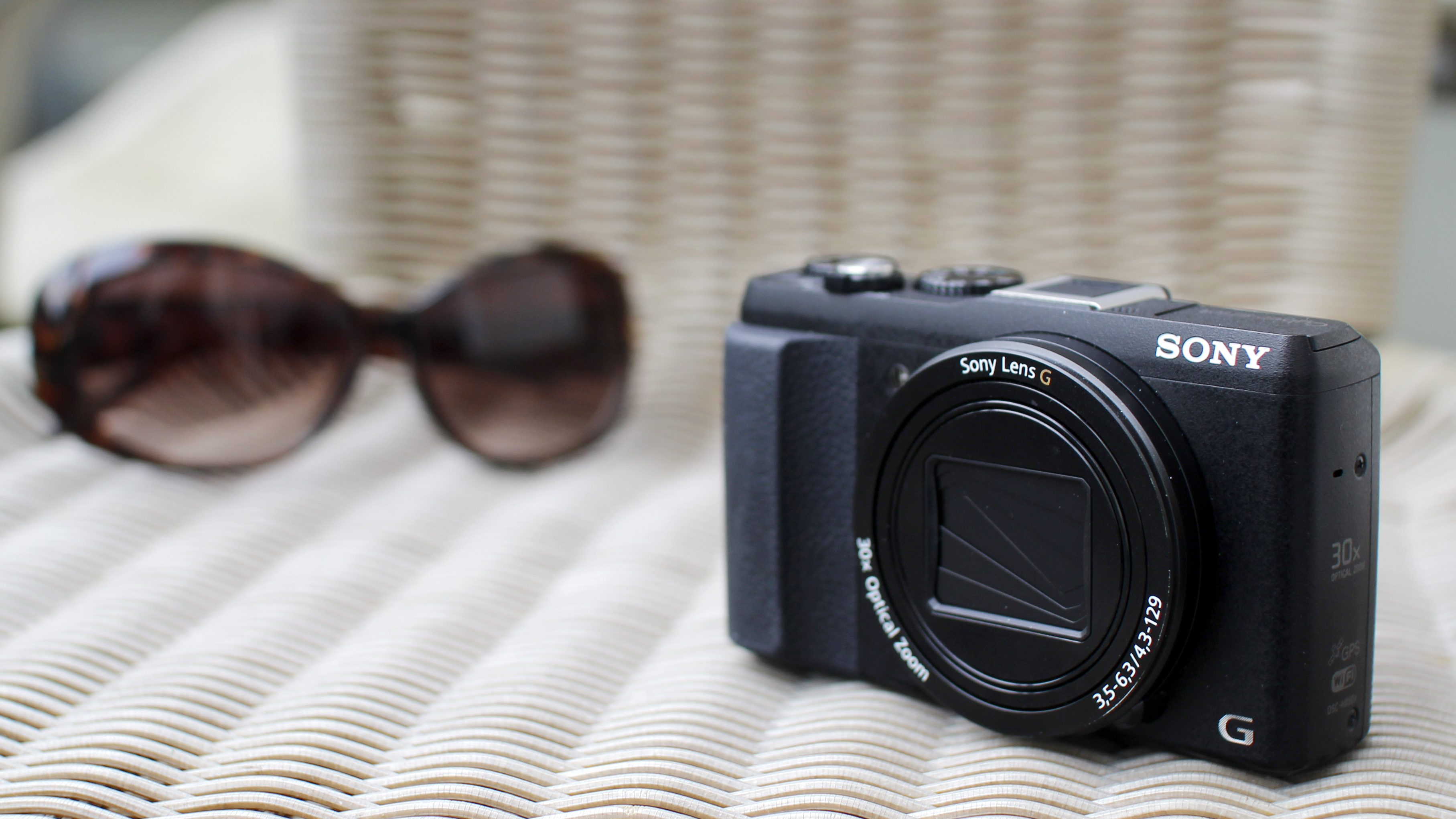Why you can trust TechRadar
The HX60 is fairly chunky for a compact camera, but considering it houses a 30x optical zoom, it's remarkably sleek.
It's solid and weighty enough to give it a quality feel, and those who are tempted by this kind of camera as a second, or everyday camera, will probably find that the size and design really appeals.
A chunky, textured grip on the front of the camera gives excellent purchase when using the camera one-handed, while a thumb rest on the back of the camera helps it to sit naturally in the hand. All of the camera's buttons on the back of the camera are grouped on the right-hand side, making them easy to reach with your thumb.

The HX60 doesn't have a touchscreen, but there are a good number of buttons and dials to give quick access to a lot of different functions. On top of the camera are two dials, one for changing the shooting mode from manual, to semi-automatic, automatic and scene modes. You'll also find a Memory Recall slot here, which is useful if you often like to shoot with one particular group of settings – i.e. monochrome or high sensitivity. A second dial is used for altering exposure compensation.
Also on top of the camera is the shutter release button, around which you'll find the zoom lever. Zooming in and out is pretty quick and fluid, which is important for a camera with such a high zoom ratio.
On the back of the camera is a scrolling dial that doubles up as a four-way navigational pad. Each direction of the pad controls something, such as right to alter flash settings, or left to change the drive mode. Unlike some other Sony cameras, the buttons can't be customised to a different setting, but there's a sensible selection of options available nonetheless.
To access the most commonly used settings, all you need to do is press the Fn (function) button. By default, here you'll find settings such as white balance, sensitivity and Picture Effect. Actually, this menu is customisable, so if you never use the Flash Compensation option, say, you could remove it and replace it with something you do use. It's a nice way to work.

You can change the autofocus point, which is nice to see. To do this, you first need to switch Focus Area from 'Wide' to 'Flexible Spot'. You can also choose a small, medium or large spot, depending on the size of the detail you're trying to focus on.
Once you've selected Flexible Spot, you simply need to press the centre button in the navigation pad and then scroll around the screen to the point you require. It would be quicker to do this with a touchscreen, but it's not as convoluted as we've seen on other Sony cameras, which is good.
Sony has taken the decision to use the same menu system across its range, whether it's a compact camera, compact system camera or DSLT. As such, if you're a user of another Sony camera you should be at home here.
It also makes the HX60 all the more appealing to anybody who already owns a Sony model. Fortunately, the menu that Sony has chosen to use is a sensibly arranged one, split into camera settings, custom settings, wireless options, PlayMemories apps, Playback and setup options.
Sony has been integrating Wi-Fi into its cameras for some time now, and for the most part it's easy to use. Once you've completed initial setup of the Wi-Fi connection, you won't need to input the password again, but we did find you need to manually connect the cameras often enough for it to become annoying.

If you have an NFC-enabled device it's much easier, as all you need to do is simply tap the two together to create the connection. Using the PlayMemories app on an iPhone 4S is good, if not perfect, but it's a decent solution to getting images from the camera ready for uploading to social networks.
The ability to add apps to Sony cameras has also been around for a little while now, most prevalently on its compact system camera series, such as the NEX 5T. These give you the ability to expand the functionality of the camera.
Some apps are already preloaded onto the cameras, while others can be downloaded from the PlayMemories store. The range is reasonable, but it would be nice to see Sony adding some more interesting options here – especially in the paid-for section.
Of the apps that are pre-installed, Multiple Exposure is fun to experiment with, guiding you along the process of creating a multiple exposure image. You can also use a Remote Control app to take control of the camera from a smartphone or tablet.
Amy has been writing about cameras, photography and associated tech since 2009. Amy was once part of the photography testing team for Future Publishing working across TechRadar, Digital Camera, PhotoPlus, N Photo and Photography Week. For her photography, she has won awards and has been exhibited. She often partakes in unusual projects - including one intense year where she used a different camera every single day. Amy is currently the Features Editor at Amateur Photographer magazine, and in her increasingly little spare time works across a number of high-profile publications including Wired, Stuff, Digital Camera World, Expert Reviews, and just a little off-tangent, PetsRadar.

